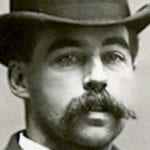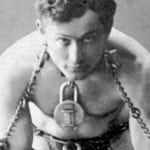 Weird Stuff
Weird Stuff  Weird Stuff
Weird Stuff  Movies and TV
Movies and TV Top 10 Ghost Adventures Episodes That Will Haunt You Forever
 Animals
Animals Ten Animals That Produce and Store Toxins in Unlikely Places
 Weird Stuff
Weird Stuff 10 Weird Things That Warp Your Sense of Time
 Miscellaneous
Miscellaneous Ten More Extremely Unexpected U.S. State “Firsts”
 Humans
Humans 10 Ideas That Scare People to Death
 Music
Music The Cursed Decade: 10 Classic Rock Stars Who Had Low Periods in the 1980s
 Health
Health 10 Crazy Ways Sleep Deprivation Can Affect You
 History
History 10 Enthralling Facts about the Field of Cloth of Gold
 Pop Culture
Pop Culture The Ten Greatest Engineers in Science Fiction History
 Weird Stuff
Weird Stuff 10 Surprising Things That Were Designed to Stop Evil Behavior
 Movies and TV
Movies and TV Top 10 Ghost Adventures Episodes That Will Haunt You Forever
 Animals
Animals Ten Animals That Produce and Store Toxins in Unlikely Places
Who's Behind Listverse?

Jamie Frater
Head Editor
Jamie founded Listverse due to an insatiable desire to share fascinating, obscure, and bizarre facts. He has been a guest speaker on numerous national radio and television stations and is a five time published author.
More About Us Weird Stuff
Weird Stuff 10 Weird Things That Warp Your Sense of Time
 Miscellaneous
Miscellaneous Ten More Extremely Unexpected U.S. State “Firsts”
 Humans
Humans 10 Ideas That Scare People to Death
 Music
Music The Cursed Decade: 10 Classic Rock Stars Who Had Low Periods in the 1980s
 Health
Health 10 Crazy Ways Sleep Deprivation Can Affect You
 History
History 10 Enthralling Facts about the Field of Cloth of Gold
 Pop Culture
Pop Culture The Ten Greatest Engineers in Science Fiction History
10 Notably Weird Deaths of the 20th Century
We at Listverse have a bit of a morbid bent, and as such, we enjoy talking about weird ways for people to die. Like, a lot. If karma exists, we sort of expect to die in the most public and hilarious way possible—say, falling all the way down a three-story crystal spiral staircase lined with squeaky horns and confetti cannons at its grand unveiling, after slipping on a comically oversized banana peel at the top, while a polka band plays in the background—and that will be fine. We’re good sports.
Since we headed down that road long ago, there’s no reason not to present this list of notable 20th Century figures who died in notably weird ways. Enjoy, and we’ll see you at the unveiling!
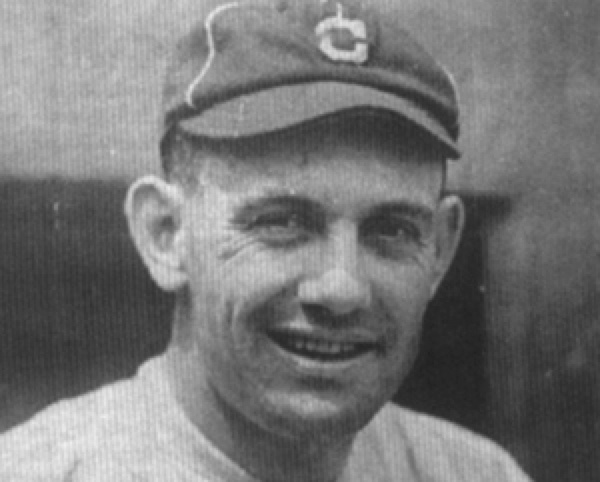 Ray Chapman was a standout shortstop for the Cleveland Indians, who—on August 16, 1920—became the only professional baseball player to be killed by a pitch. It was a “spitball”—a ball that had been dirtied, scuffed up or otherwise altered—and it was speculated that Chapman never saw the ball coming.
Ray Chapman was a standout shortstop for the Cleveland Indians, who—on August 16, 1920—became the only professional baseball player to be killed by a pitch. It was a “spitball”—a ball that had been dirtied, scuffed up or otherwise altered—and it was speculated that Chapman never saw the ball coming.
Yankees pitcher Carl Mays threw the high, inside ball that connected with Chapman’s left temple, breaking it with an audible sound that Mays took at first (understandably) to be the crack of the bat. Chapman collapsed, briefly regained his feet, and collapsed again on the way to the dugout, never regaining consciousness.
Mays was cleared of any wrongdoing, but the spitball was made illegal—except for established pitchers who had been using it their whole careers, who were given a grandfather clause, which seems like it kind of defeats the whole purpose of the rule, but we’re no sports experts. Oddly, batting helmets weren’t made a requirement until 1971.
 Marcus Garvey was one of the first Black activists. Born in 1887, he developed a Pan-African philosophy that would come to be known as “Garveyism“; famous for espousing repatriation of blacks to Africa, that was only a small part of his doctrine. He was a successful businessman and master orator, founder of many formative Black political and activist parties, and a strong influence on the Nation of Islam.
Marcus Garvey was one of the first Black activists. Born in 1887, he developed a Pan-African philosophy that would come to be known as “Garveyism“; famous for espousing repatriation of blacks to Africa, that was only a small part of his doctrine. He was a successful businessman and master orator, founder of many formative Black political and activist parties, and a strong influence on the Nation of Islam.
Garvey’s death was not only strange but ironic—he suffered a double stroke after reading a premature obituary for himself. To add insult to injury (or, you know, death), it was not a kind obituary, stating that Garvey died “broke, alone and unpopular”, and was dismissive of his politics and accomplishments; thus, while the news of his death may have been premature, it was not so for long.
Interestingly, Garvey is considered a prophet of the Rastafari religion. He was from Jamaica, and while he was raised a Methodist, his beliefs resonated deeply with the Jamaican movement—many even believe him to have been a reincarnation of Saint John the Baptist.
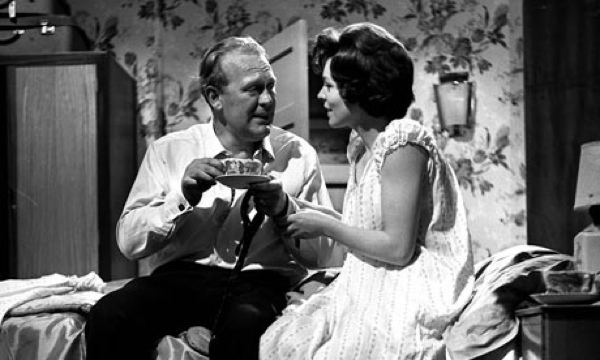
“Armchair Theatre” was a drama anthology series that ran on British television from 1956 to 1974. Early episodes were broadcast live, and it was during a November 1958 episode that some of the types of problems inherent to live broadcasts became apparent.
Actor Gareth Jones, who was only 33 years old at the time, was in makeup in between scenes when he suffered a massive heart attack. As the show continued on the stage, Jones collapsed and died—the only actor at the time to have expired during a live television transmission. The director and producer scrambled to improvise around his absence, and the play actually carried on to its conclusion as the dead actor was whisked off the set.
A couple of odd asides: Jones’ character was actually supposed to have a heart attack at a later point in the play; and the director, Ted Kotcheff, would go on to direct Hollywood films, including First Blood and… Weekend At Bernie’s, which is about a couple of dudes trying to cover up around their boss’ absence after he inconveniently dies. We doubt the irony was lost on Kotcheff.
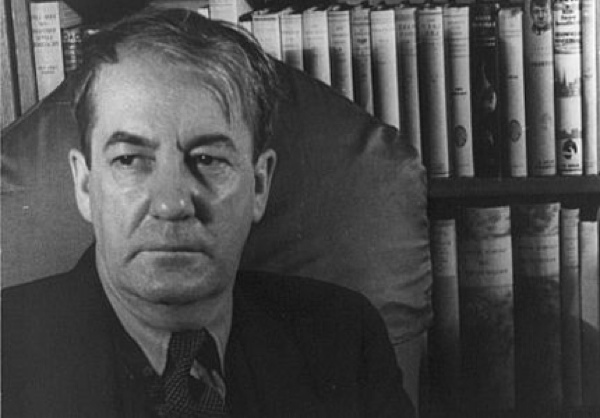
There may not have been an F. Scott Fitzgerald, Ernest Hemingway or William Faulkner if there hadn’t been Sherwood Anderson first. Throughout the teens, twenties and thirties, he wrote a series of novels and short stories that were a direct influence on the Great American Writers; his 1919 collection Winesburg, Ohio eschewed the literary devices of the day to paint the kind of bleak, unsentimental portraits of American life for which others would become more famous than he.
Indeed, Anderson’s death sounds a bit like the sort of hackneyed plot device he would have hated—while at a party, he popped his martini olive down the hatch. An olive that contained a sliver of a toothpick. No, he didn’t choke on it—it likely damaged his gastrointestinal tract, causing an infection, and he died a few days after the party of peritonitis.
Anderson has come to be known as a major American writer; dozens of works were published posthumously, and many are still in print. While contemporaries like Fitzgerald were known to be done in by an abundance of drinks, Anderson is the only of their ranks to be killed by just one martini.

We don’t have to tell you what legendary master distiller Jack Daniel is known for; statistically speaking, at least one of you is probably smashed on what he is known for right now. We’ve talked (https://listverse.com/2013/02/10/10-interesting-histories-of-iconic-products/) before about some of the interesting details of his life, but the incident that brought about the end of that life was unfortunately pretty ridiculous.
Jack arrived early to work at his office one morning in 1906, before anyone else. This was unusual, and Jack was having a hell of a time remembering the combo to the company safe, as he was almost never the one to open it. Growing frustrated, he gave the safe a good hard kick—and probably busted something in his foot, as he immediately began limping, and the limp never went away.
The safe had its revenge over time. The limp grew worse, blood poisoning was suspected, the foot grew gangrenous, then had to be amputated. Daniel died of gangrene five years after the safe-kicking, which we suppose goes to show that if your whole life revolves around whiskey, trying to show up for work early is probably a bad idea. Right?

The Yardbirds were a kind of incubator for brilliant rock guitarists. Their second lead, Eric Clapton, split shortly after the group’s initial success to form the supergroup Cream; he was replaced by Jeff Beck, who was later joined by (and, even later, replaced by) Jimmy Page, who created his style of playing with a cello bow in the Yardbirds before taking it to Led Zeppelin and helping co-invent heavy metal.
The Yardbirds’ frontman and lead singer for their entire existence, however, was Keith Relf. Relf stayed with the group from its Clapton-led bluesy period through its heavier, distorted Beck/Page period; he disbanded it largely because he was tired of the new, heavier electric direction, and presumably of screaming to be heard over the instruments.
Ironically, late in his life he was involved in a heavy metal band called Armageddon, for whom he was recording vocals at the time he died—from being electrocuted while playing an improperly grounded electric guitar. Perhaps he should have stayed with the softer music, but we digress; Relf was posthumously inducted into the Rock Hall Of Fame as a member of the Yardbirds in 1992.

Janet Parker is the only person on this list who is notable only for her cause of death, but what a cause it is: she is the last known casualty of smallpox, and she serves as a rather terrifying reminder of how even “eradicated” diseases continue to exist: in laboratories.
Parker was a University of Birmingham medical photographer, and she worked in the same building that housed the laboratory of Henry Bedson, a prominent smallpox researcher. To this day, all that is known is that Janet’s smallpox infection came from that lab—nobody knows how she was contaminated, or how the virus was able to escape the lab. Dr. Bedson, ironically, had recently come under criticism from the World Health Organization for his lab not being up to their safety standards—standards that he had defended in a sharply worded letter, just days before Janet Parker was infected.
She died in September 1978, ten months after the last natural case of the disease, and there have been no cases since. But samples still exist in various research labs around the world, and another breach could play out like this one thankfully didn’t, a fact of which Dr. Henry Bedson was all too aware—he didn’t even stick around to see how it would play out. Bedson committed suicide five days before Janet Parker’s death.
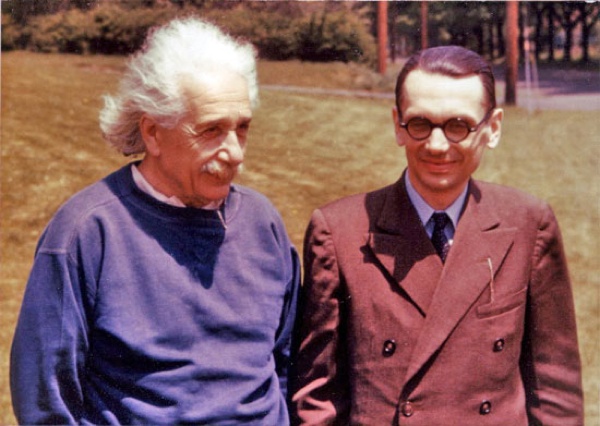
As you can see by the above picture of him chumming around with Albert Einstein, Kurt Godel was a very, very smart man. His Incompleteness Theorem changed the science community’s understanding of logic, he has a mathematical function (Godel numbering) named after him, and look—up there. With Einstein, palling around.
Very, very smart people are known to have quirks and eccentricities, in case you were unaware, and Godel was no exception. Later in his life he became exceedingly paranoid, and specifically became afraid that people were trying to poison him. As such, he refused to eat food prepared by anyone other than his wife—ever. With no exceptions. You may see where this is going.
When Godel’s wife became ill and was hospitalized for six months, he literally wasted away. He died on January 14, 1978, weighing all of 65 pounds; the death certificate listed the cause of death as, “malnutrition and inanition caused by personality disturbance”, which is kind of a more formal way to say that he died of being a stubborn bastard.
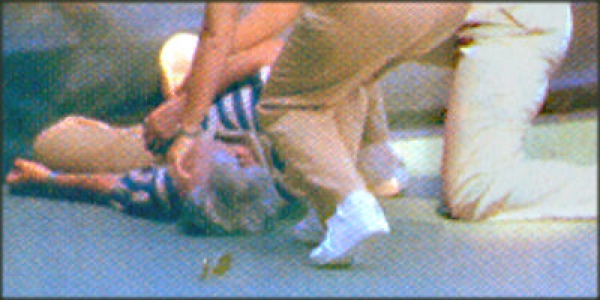 Stefan Edberg was one of the dominant pro tennis players of the ’80s and ’90s, having won the U.S. Open, Australian Open and Wimbledon (all twice), and was considered one of the great serve-and-volley players of his era. That is to say, he didn’t rely on a powerful serve, but on his quickness and athleticism in getting to the net afterwards—which makes the accident that befell line judge Dick Wertheim particularly odd.
Stefan Edberg was one of the dominant pro tennis players of the ’80s and ’90s, having won the U.S. Open, Australian Open and Wimbledon (all twice), and was considered one of the great serve-and-volley players of his era. That is to say, he didn’t rely on a powerful serve, but on his quickness and athleticism in getting to the net afterwards—which makes the accident that befell line judge Dick Wertheim particularly odd.
Edberg was only 16 and participating in a Junior Boys’ Title Match at the U.S. Open; Wertheim was a linesman, and was observing the match seated in a folding chair courtside. The teen star unleashed a monster serve that went errant; incredibly, Wertheim had time to see it coming right at him and attempt to dodge, but that only meant that he was already off-balance when the ball nailed him dead in the groin. He crumpled, striking his head on the pavement, and was rushed to the hospital. Wertheim never regained consciousness, and died about a week later of the head injury.
Edberg was pretty seriously shaken up (though he did go on to win the match), and even considered quitting tennis. It was a bizarre fluke of a tragedy and an astonishing display of lethal power—had we been Edberg, we think we either would have hung it up or become a superhero.
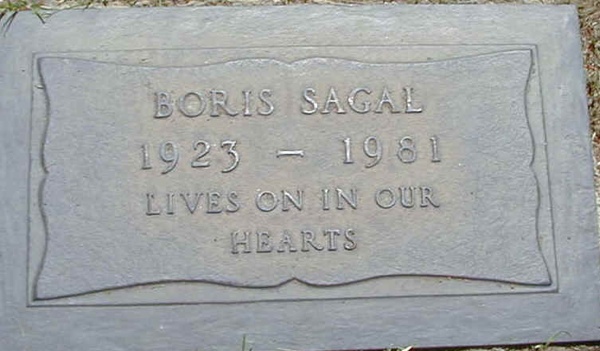 Boris Sagal was a film director and the father of a family of acting siblings, the most famous of whom is probably daughter Katey, who—despite her recent work on “Sons Of Anarchy” and as Leela on “Futurama”—will always be Peg Bundy to us. Boris met his end in a way that few Hollywood types have—in fact, there are some eerie parallels with the only other case to come to mind.
Boris Sagal was a film director and the father of a family of acting siblings, the most famous of whom is probably daughter Katey, who—despite her recent work on “Sons Of Anarchy” and as Leela on “Futurama”—will always be Peg Bundy to us. Boris met his end in a way that few Hollywood types have—in fact, there are some eerie parallels with the only other case to come to mind.
While directing a TV movie in Oregon in 1981, Boris backed into the rotor of a helicopter and was decapitated by it. You may recognize this as being similar to the fate of Vic Morrow, on actor who died on the set of the Twilight Zone movie a year later due to decapitation by helicopter.
Boris Sagal had directed a couple episodes of the “Twilight Zone” TV series when he was getting started. Also, his first feature film job was “The Omega Man”, which was an adaptation of the novel “I Am Legend” by Richard Matheson, who was a writer on the Twilight Zone. Who, in fact, wrote most of the movie. Except the segment that was being filmed during the helicopter accident. What does all of this mean?
Simple: don’t stick your head into helicopters’ rotor blades. You will die.
